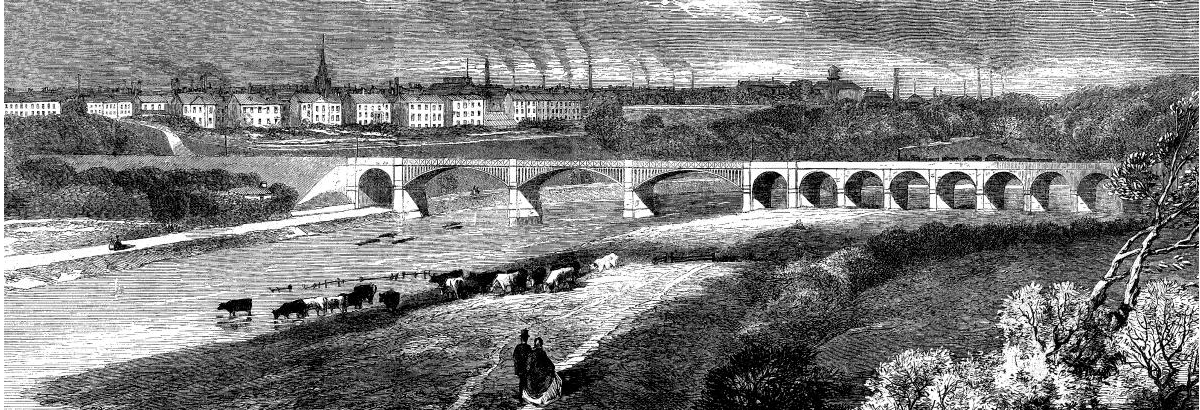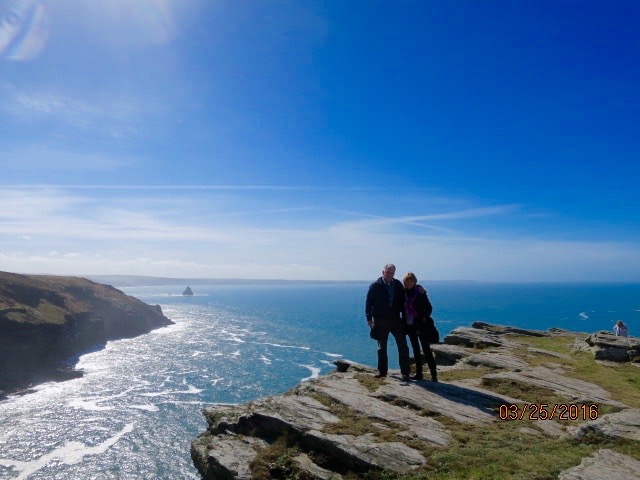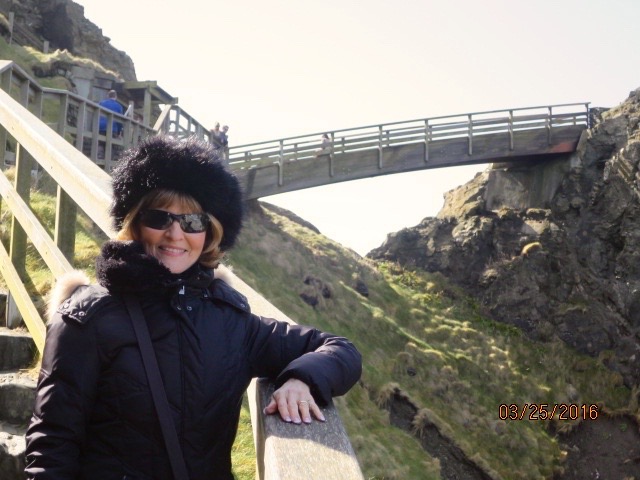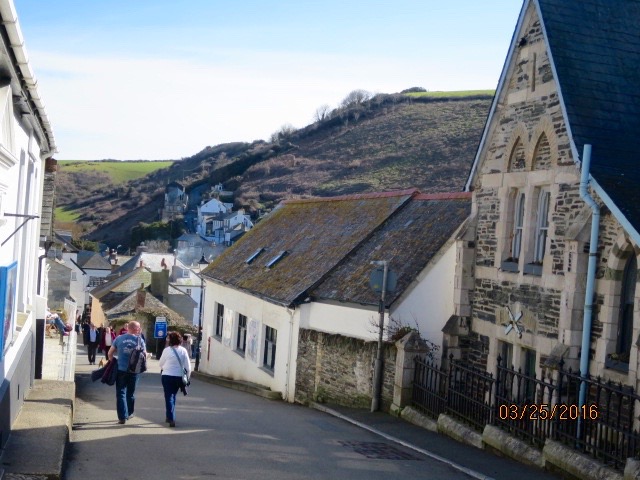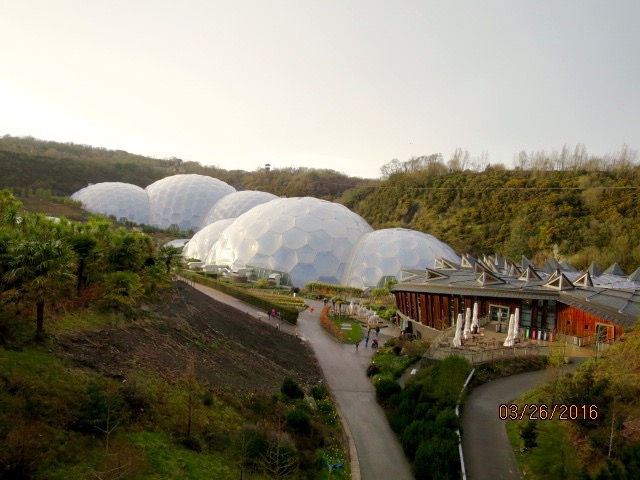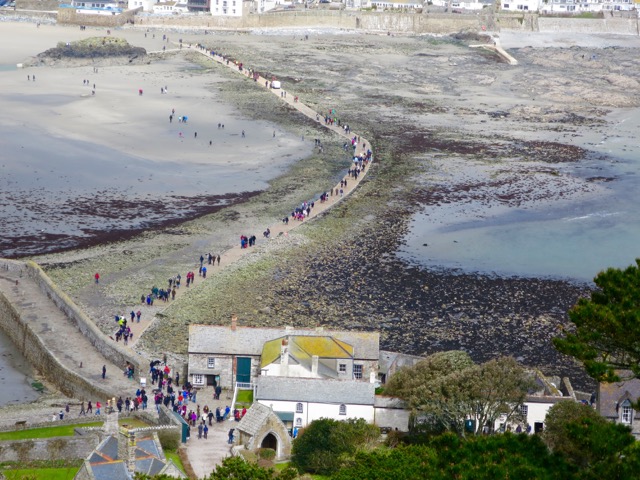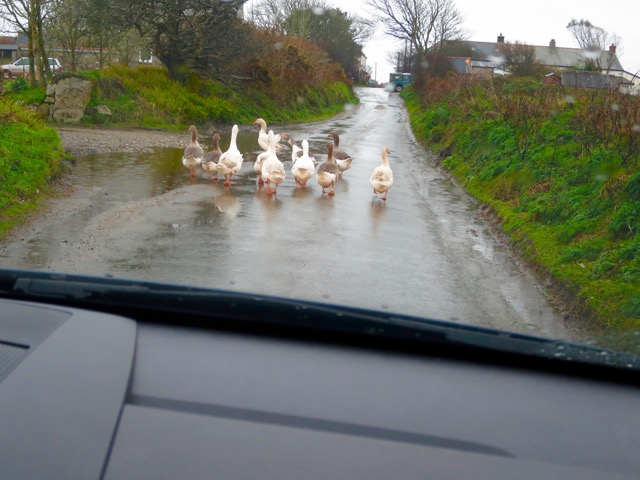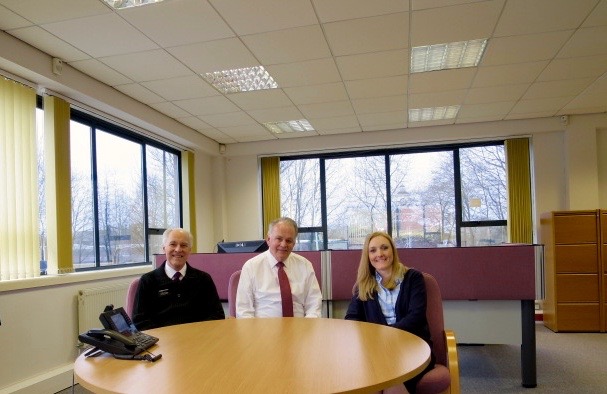I am grateful not only for the resurrection, but that the stone was moved so I can have the powerful witness of those who actually saw that the tomb was robbed; that death had been defeated and replaced with everlasting life. In a way, that tomb still invites us to peer in and see for ourselves what miracle has been performed and, perhaps, let us hear Him call our name–but only if we have the faith to enter and the courage to ask the question.
Last week, we were all stunned by the terrorist attack in Belgium–particularly because it impacted those with whom we so closely identify–reminding us that the reach of this evil is long and powerful and none is exempt from its terrible consequences. Our dear missionaries are people of such courage and commitment. Almost universally, their response to something like this is to heal quickly and stay in the service of the Lord.
A couple of weeks ago, we drove about 2 hours away to see Hadrian’s Wall. The Romans build the wall in the third century to prevent against Scottish invasions. The wall runs 73 miles all the way from the west to the east coast of England. It is not particularly large or impressive in segments–it looks a lot like any other rock wall in England. Here is a piece:
The Romans occupied England from about 150 AD until about 450 AD. Most of the major cities in England have some remnants of the Roman period.
One of our major bucket-list items was to visit Cornwall–a county in SW England. Since Easter weekend includes bank holidays on Friday and Monday, we and the Backmans headed south. Because of traffic, it was a 6 hour drive down and a 7 hour drive home. But, it was worth it–even though it rained Thurs night, Saturday, Sunday, and Monday, Friday was a gift. We used it to visit some of the remarkable coastline. We started at Tintigal which is the castle where, supposedly, King Arthur reigned and had his round table of knights. The hike and location are the most impressive part. There is not much left of the castle. This is the setting.
We then visited a small fishing village called Port Isaac. It is quite a climb down a steep road to get to the town.
On Saturday, we visited the Maritime Museum in Falmouth (where we stayed) and then the Eden Project–which is a large indoor rain forest. Quite a memorable place.
On Sunday, went to Church (described above) and then visited St. Michael’s Mount–an castle on top of a hill on an island near the southern tip of England. To get to the castle, you have to wait for a low tide, then walk over a causeway, then climb a very steep hill. Here are a couple of pictures.
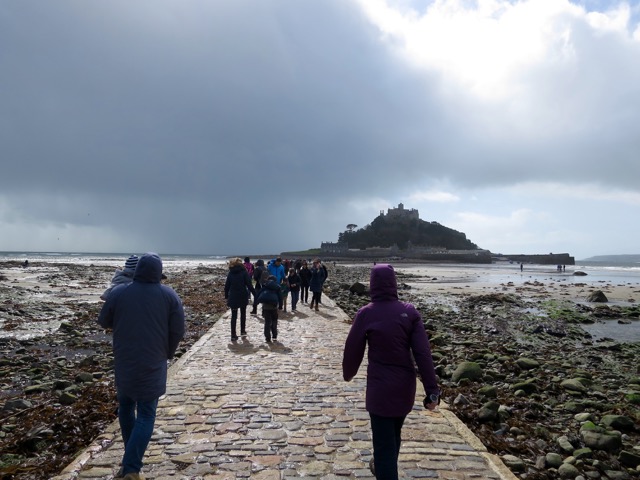
The causeway. Note the squall coming on the left. It passed to the left without killing us. Very strong winds.
On the way back, we went by Lanyon Quoit, an ancient rock structure that, like so many others, has no known origins or uses.
As we drove home that night, fitting to the end of a long day, a flock of geese showed us “the end.” This is about the widest road we were on for three days.
Our OGC team in Chorley. From left, Elder Backman, Elder Konold, and Kristie Hita
Happy Spring. We had a real-live snow storm this morning.
Cheers for now.
